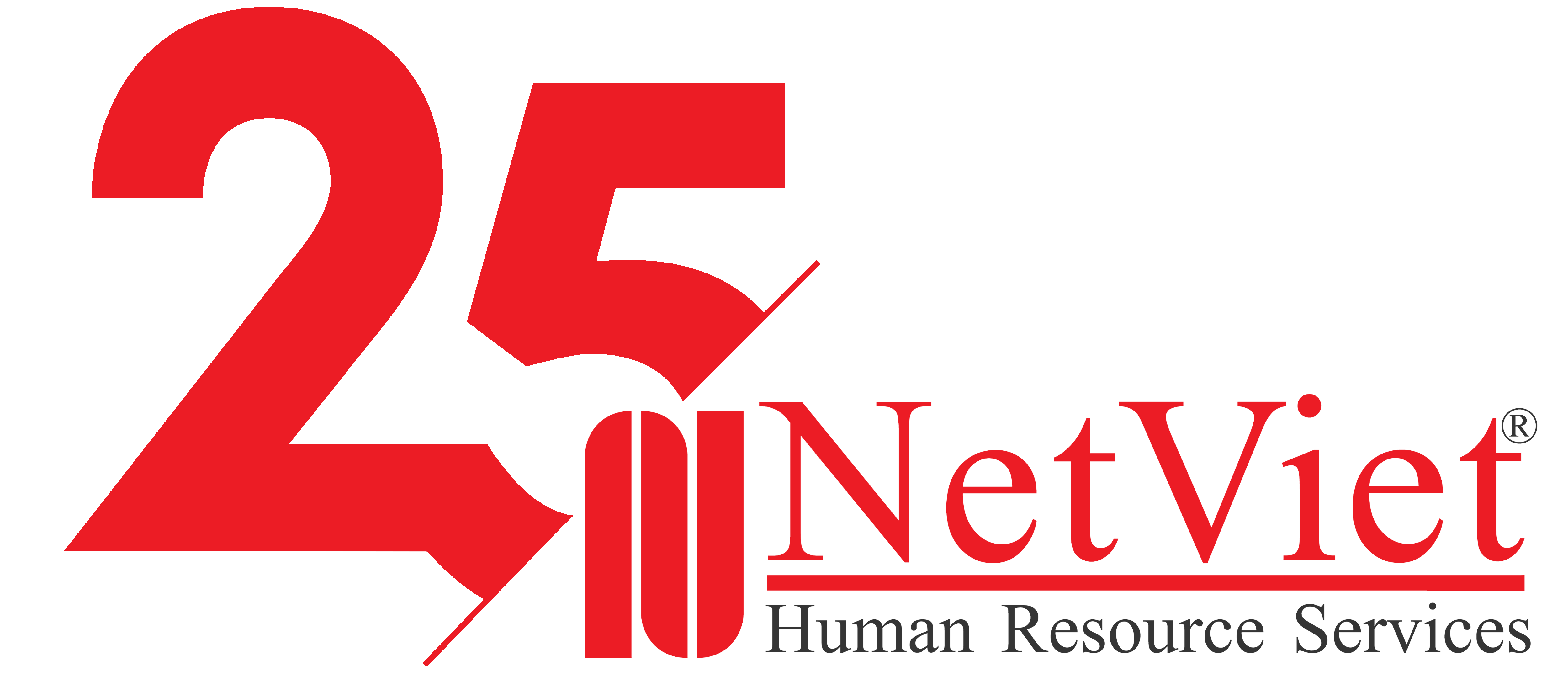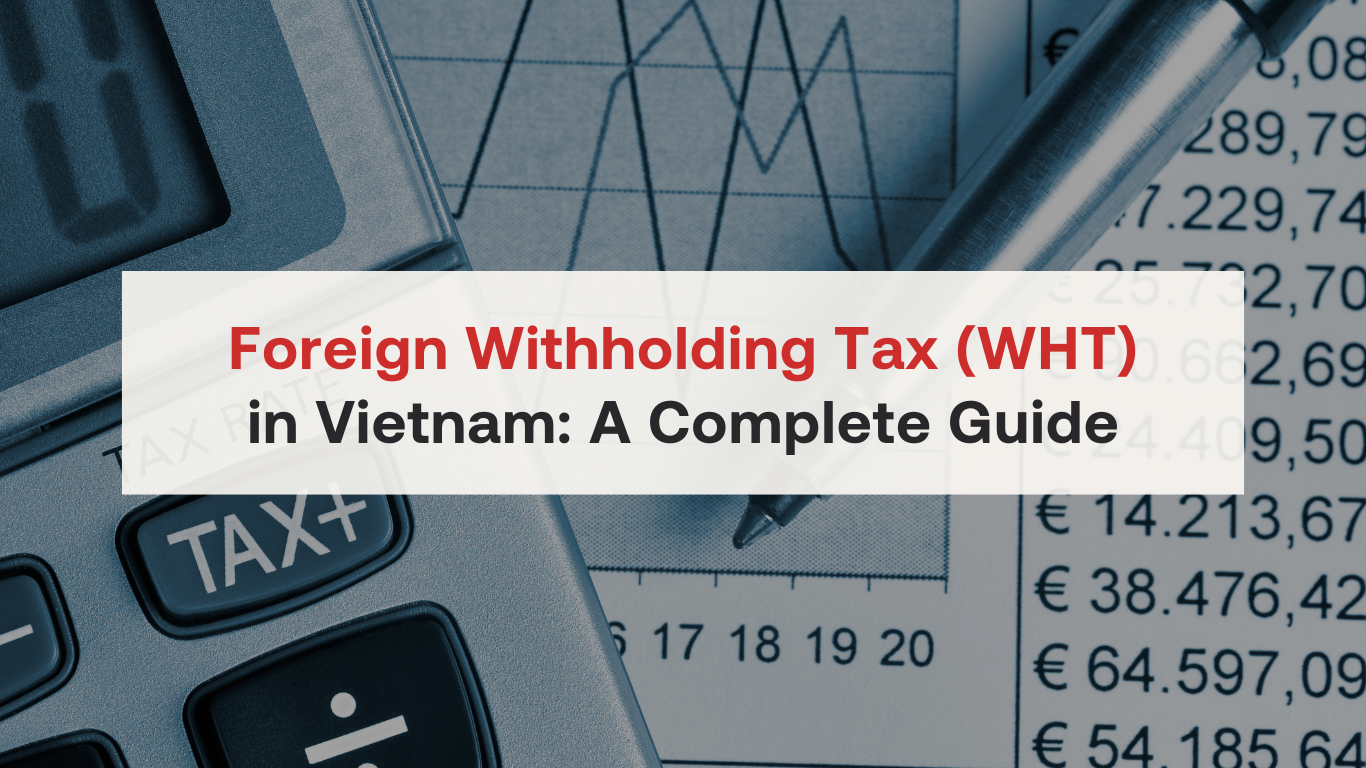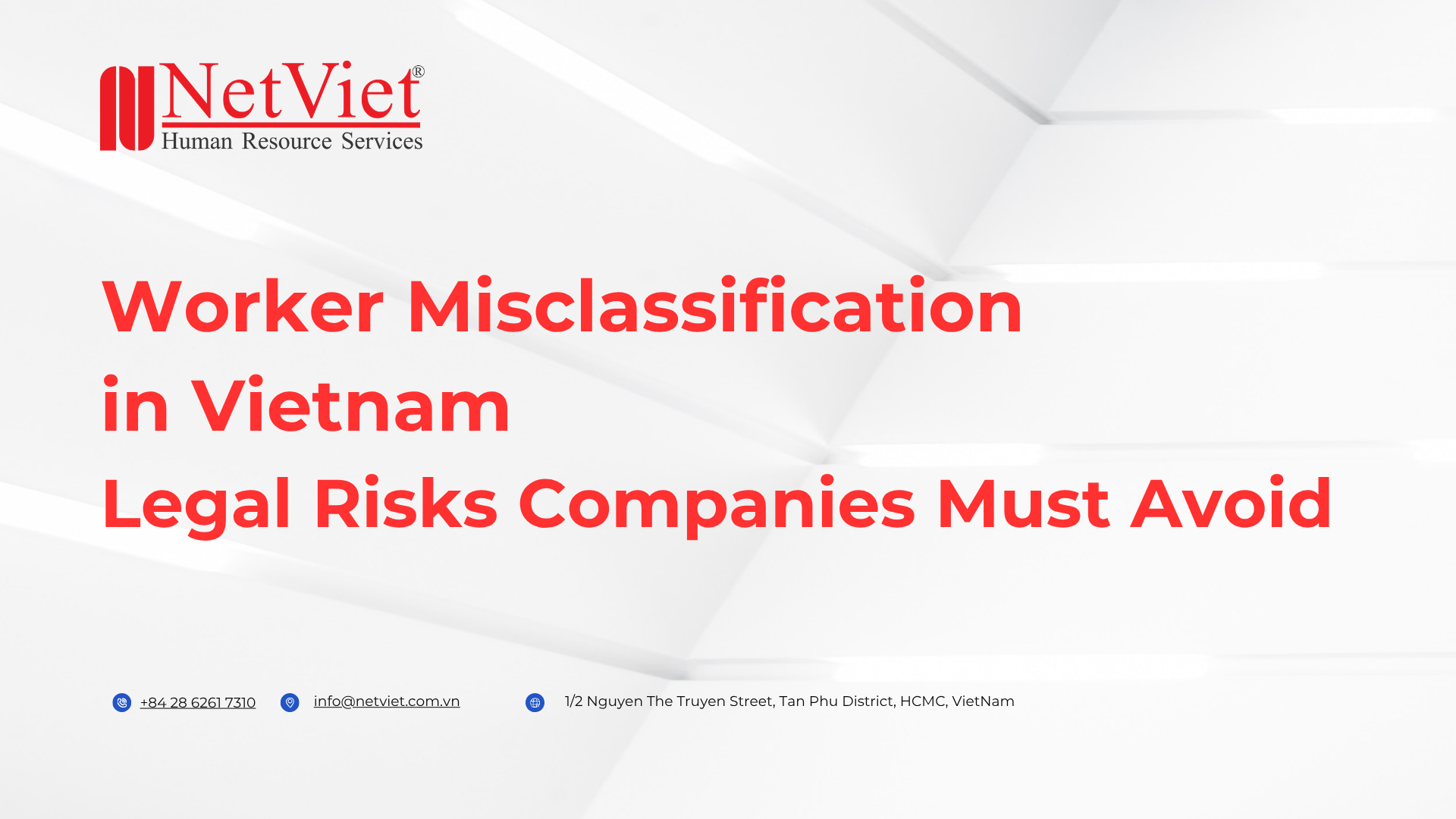Expanding your business into Vietnam? If you’re a foreign company or contractor engaging in transactions with Vietnamese entities, understanding Vietnam’s Foreign Withholding Tax (WHT) is essential. This tax can impact your contracts, pricing, and compliance obligations. In this guide, we’ll break down what WHT is, when it applies, how to declare it, and what tax rates to expect — all explained clearly to help you navigate Vietnam’s tax landscape smoothly.
Table of Contents
ToggleWhat is Foreign Withholding Tax (WHT) in Vietnam?
Vietnam’s Withholding Tax [or often referred to Foreign Contractor Tax (FCT)] is a withholding tax applied to payments made to foreign companies or individuals providing goods, services, or other transactions in Vietnam. It consists of two main components:
- Value Added Tax (VAT)
- Corporate Income Tax (CIT) for foreign organizations or Personal Income Tax (PIT) for foreign individuals.
The WHT ensures that foreign contractors contribute tax on income generated from activities within Vietnam, even if they do not have a permanent establishment in the country.
When Does WHT Apply?
WHT applies to a broad range of transactions involving foreign contractors, including:
- Sale of goods or commodities in Vietnam: When a foreign entity sells goods delivered within Vietnam or retains ownership and control over distribution, marketing, or pricing in Vietnam.
- Sale of goods combined with services: For example, installation, commissioning, or maintenance services linked to goods sold in Vietnam.
- Provision of services in Vietnam: This includes online advertising, machinery repair, brokerage, training, telecommunications services, and more.
- Contracts negotiated or concluded via Vietnamese entities or individuals.
- Import-export transactions conducted within Vietnam where foreign entities earn income under contracts with Vietnamese companies.
- Other income sources in Vietnam: Such as asset transfers, royalties, interest, and compensation for contract breaches.
Exceptions:
Certain transactions are exempt from WHT, including:
- Pure purchase contracts where goods are bought from abroad and delivered outside Vietnam without associated services performed in Vietnam.
- Services performed and consumed entirely outside Vietnam (e.g., some repair, training, advertising services).
How to Declare and Pay Withholding Tax
Vietnam offers three methods for declaring and paying WHT:
- Direct (Withholding) Method
The most common method, where the Vietnamese party paying the foreign contractor withholds the tax and remits it to tax authorities.
- Net Contracts: The Vietnamese party pays tax on behalf of the foreign contractor, “grossing up” the contract amount.
- Gross Contracts: The foreign contractor bears the tax cost; the Vietnamese party withholds tax from payments.
Tax must be declared and paid within 10 days of payment. For frequent payments, monthly declarations are allowed.
- Declaration Method (Vietnam Accounting System – VAS Method)
Foreign contractors registered in Vietnam and using the Vietnamese Accounting System declare and pay CIT based on net profits (revenue minus deductible expenses) at a rate of 20%. They must comply with Vietnamese accounting and tax filing requirements, including VAT invoicing.
- Hybrid Method
This method combines aspects of the direct and declaration methods. VAT is declared under the declaration method, while CIT is withheld using the direct method. It requires simplified accounting records and registration with tax authorities.
Withholding Tax Rates
To determine the WHT payable, individuals and organizations must identify the amount of contractor tax to be paid according to current legal regulations. Below is information about the types of WHTs and their current rates.
-
Withholding Tax Rates for Corporate Income Tax (CIT)
Case 1: Tax declaration method
Implemented according to the provisions of the Corporate Income Tax Law and guiding documents.
Case 2: Direct method (calculated as a percentage of revenue)
The CIT rate calculated on taxable revenue for each business sector is specified in the table below:
| No. | Business Sector | CIT Rate (%) on Taxable Revenue |
| 1 | Commercial activities: distribution, supply of goods, raw materials, supplies, machinery, equipment; distribution, supply of goods, raw materials, supplies, machinery, equipment associated with services in Vietnam. | 1 |
| 2 | Leasing all types of machinery and equipment. | 5 |
| 3 | Management service provision. | 10 |
| 4 | Other financial service provision. | 5 |
| 5 | Leasing ships, aircraft engines, aircraft parts, sea vessels. | 2 |
| 6 | Construction, installation (with or without supply of raw materials, machinery, equipment). | 2 |
| 7 | Production, business activities, transport by sea and air. | 2 |
| 8 | Securities transfer, deposit certificate, reinsurance abroad, commission for reinsurance. | 0.1 |
| 9 | Loan interest. | 5 |
| 10 | Income from royalties. | 10 |
Note:
- For contracts involving multiple business activities, the CIT rate is applied based on the revenue of each activity. If it is not possible to separate the revenue, the highest CIT rate among the activities will apply to the entire contract value.
- For construction and installation contracts that separately state the value of raw materials, machinery, or equipment, the CIT rate is applied to each component accordingly. If not separated, the CIT rate for the corresponding business activity applies (e.g., 5% for services).
-
Withholding Tax Rates for Value Added Tax (VAT)
Case 1: Deduction method
Implemented according to the provisions of the VAT Law and guiding documents.
Case 2: Direct method (calculated as a percentage of revenue)
The VAT rate for each business sector is specified in the table below:
| No. | Business Sector | VAT Rate (%) on Taxable Revenue |
| 1 | Services, leasing, construction, installation of machinery and equipment, insurance (excluding supply of raw materials) | 5 |
| 2 | Production, transport, other business activities, supply of goods (including construction and installation with supply of raw materials) | 3 |
| 3 | Other business activities | 2 |
Note:
- The rates above are determined according to Circular 103/2014123.
Impact of Double Taxation Agreements (DTAs)
Vietnam’s DTAs with many countries may reduce or exempt WHT on certain income types, like interest and royalties, depending on the foreign contractor’s residence.
Frequently Asked Questions
Q: Is foreign contractor tax the same as withholding tax?
A: Yes, the terms are often used interchangeably in Vietnam.
Q: Do all foreign contractors have to pay WHT?
A: No, exemptions exist for pure purchase contracts and services performed entirely outside Vietnam.
Q: What laws regulate WHT?
A: FCT is governed primarily by Circular 103/2014/TT-BTC and Circular 40/2021/TT-BTC issued by Vietnam’s Ministry of Finance.
Conclusion
Complying with Vietnam’s withholding tax requirements is essential for foreign contractors and Vietnamese partners to avoid penalties and ensure smooth operations. Proper handling of WHT supports transparent business relationships and legal compliance.
For expert advice and assistance with withholding tax, payroll, and HR compliance in Vietnam, NetViet is your trusted partner. Our experienced team helps you navigate complex tax regulations and optimize your business operations.
Contact NetViet today to ensure your Vietnam business runs smoothly and compliantly.
Follow NetViet for the latest industry updates and more:
- Phone: +84 28 6261 7310
- Email: info@netviet.com.vn
- Website: www.netviet.com.vn
- Facebook | LinkedIn | Twitter














